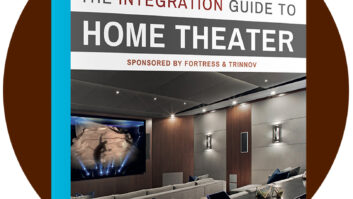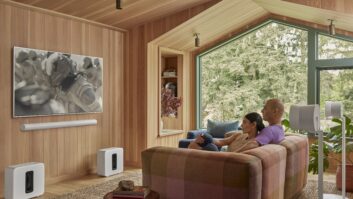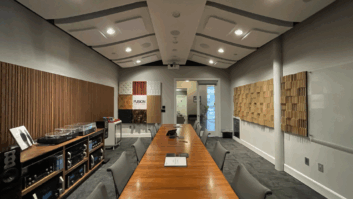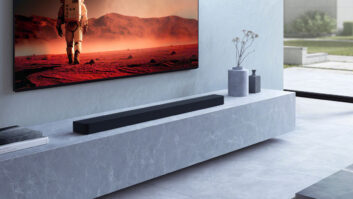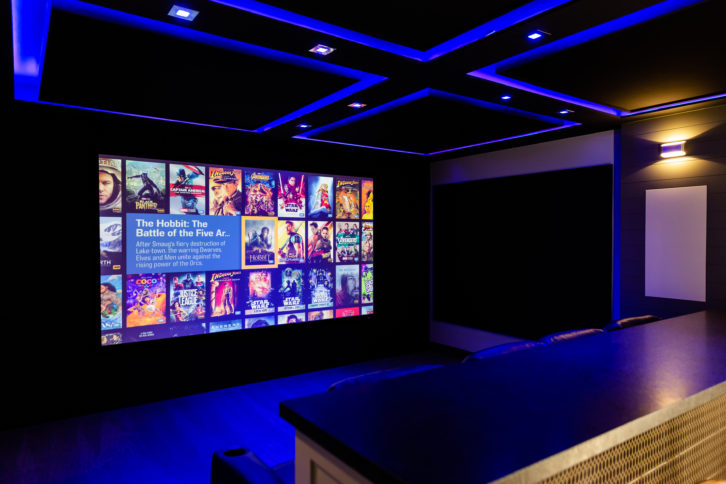
Dolby Atmos is all the buzz in both commercial and residential theaters, and the demo may be all you need to close the sale as customers are introduced to the lifelike, immersive sound elevated around them.
“Dolby Atmos has been one of the biggest ‘business as usual’ changes we have incurred in years,” says Joe Whitaker, president/co-founder, Thoughtful Integrations. “Since tech changes so often, it’s hard to justify a shift based on technology, but immersive sound formats have made the decision a no-brainer.”
Today, about 90 percent of all the company’s theater projects feature Dolby Atmos as a standard part of the install. “It’s one of the few technology advancements that makes sense both as a consumer value proposition as well as a monetary addition to an integration company’s bottom line,” he adds. “Since the Atmos object-oriented sound format increases the quality and separation of sound, a benefit to consumers, it is obvious that it has a business benefit, requiring more speakers and more powered channels of amplification.”
Related: The State of Surround Sound
At Mattera Design, some 25 percent of home theaters currently feature Dolby Atmos and that number is growing, says Joe Mattera. “It was actually initiated by inquiries from some of our existing residential clients,” he says. “The demand built slowly, coming from a particular set of our clients who are real movie buffs. Now we educate every new client who has an interest in a home cinema system, explaining the amazing benefits Dolby Atmos can offer.”
Sound Effects has been featuring Atmos since its introduction, says Wesley Palmer, president/CEO. “Some theaters had come out with it, but what really pushed it was the residential market where it really took off. Almost all of our home theater customers have it.”
Initially, the general belief was that you needed a larger dedicated theater/cinema or media room to use Atmos, he notes. “As the demand and the technology grew, this proved not to be the case. We have been designing and installing Atmos in any space — from a true, dedicated home cinema room, equipped with AV processors and speakers, to a client’s living room for an upgrade via an AV receiver, Atmos speakers, and new hardware or simple firmware.”
The trick, Whitaker explains, is to know when you should suggest Atmos. “The answer is simple; use it everywhere you can,” he says. “As the cost of technology continues to dip, and Dolby Atmos is adopted as a standard in newer consumer non-CI specific surround models, it’s time to evaluate your company’s approach to qualifying a room or consumer for immersive audio.”
Think of it as simple math. “Taking a standard 5.1 through 7.2 can mean up to four in-ceiling Atmos speakers,” he says. “For easy math we will call this $1000 (moderately priced speakers), additional dollars in parts. Say we are only talking about living rooms and flex rooms, not true theaters, of which you may do 50 (or maybe 100). This one change — this small offering — can create a gain of $50k a year, just by adding Atmos as a standard offering in rooms outside the theater.”
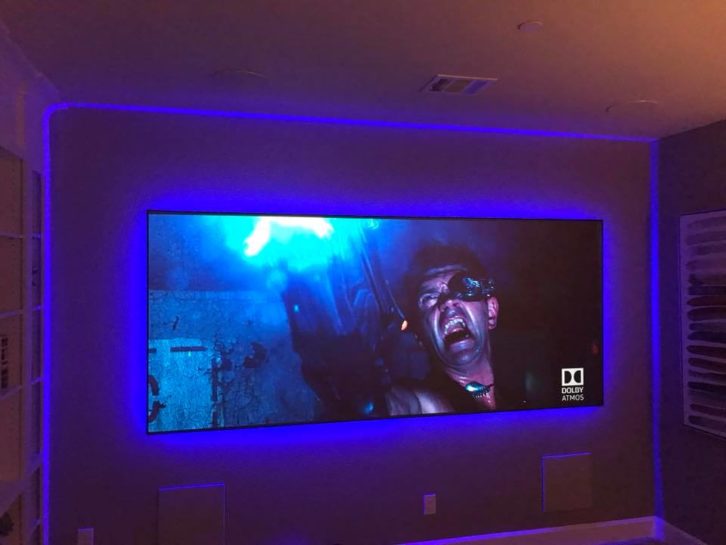
Hear It
“We like to demo Atmos in our theater, giving clients an example of how it really transforms a theater, and giving them the feeling that they are enclosed in the environment of the movie,” says Palmer.
Dolby Atmos must be heard in a demo to be appreciated, Whitaker agrees. “I still love the demo disc that was used and available at the first demo on CEDIA’s show floor. Matching the object-oriented sounds along with videos of nature and other clips was a brilliant example that had me sold in the first couple of minutes. I still remember someone asking, ‘Where’s that butterfly?’”
Although movies mastered for Dolby Atmos are an amazing experience, they may not be the best demo material. “Use demo material specifically made for showing off what Amtos can do,” Whitaker advises. “If you’re wondering how to come across the Dolby Atmos demo disc, you can get them from the reps or manufacturers you deal with, or download some shorter clips at https://www.dolby.com/us/en/guide/dolby-atmos-trailers.html.”
One of the challenges with Dolby Atmos is very close to the initial challenge experienced with 4K in its beginnings, adds Whitaker. “Where’s the content? Fortunately for us and for consumers, content is consistently being released with Dolby Atmos and the format is already supported by streaming services like Netflix and iTunes (AppleTV). I typically send my clients to https://www.dolby.com/us/en/experience/dolby-atmos/bluray-and-streaming.html for a better explanation of what’s available and where to find it.”
“We are lucky enough to have some great clients who allow us to show and demo their systems for potential clients,” Mattera concludes. “You cannot simply tell someone how something should sound. They must experience it for themselves. Atmos is an almost guaranteed closer.”




